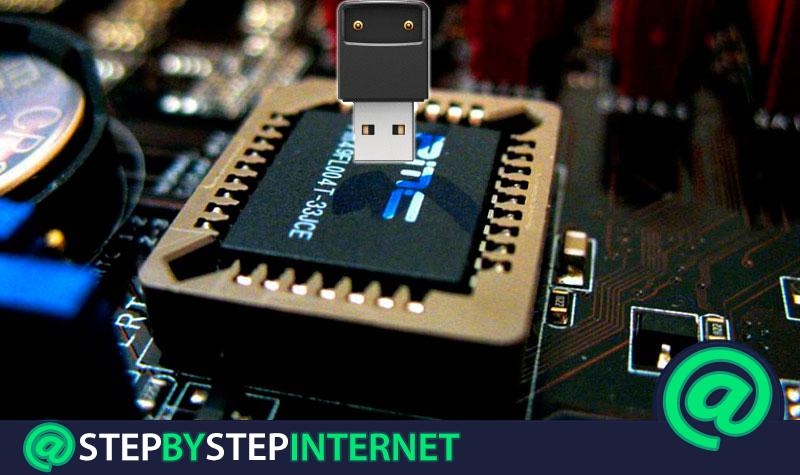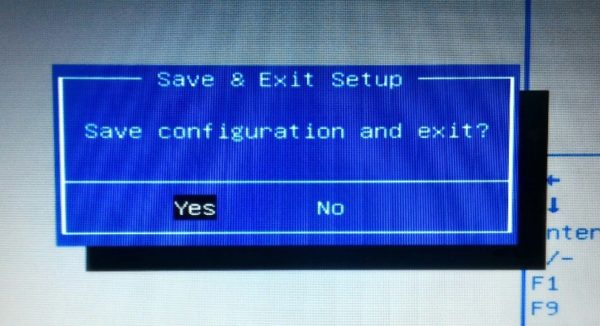
The years have advanced as well as technology. The days are over when the operating systems or software had to be installed only through the use of CD / DVD, now you can simply create a partition for booting into a USB Flash drive and be able to use it at any time you need .
If your system has been dropped or is simply unable to boot in an ideal way, the solution is to use the knowledge you are going to acquire today, to know how to change the boot source to a flash drive (USB), and thus be able to enjoy your PC with a normal boot, by means of an added pendrive.
Knowing how to configure the BIOS is an easy task, even if many tell you otherwise. Having this knowledge helps you in the present and in the future, since despite being a knowledge with a simple application it has a great importance in the world of computing. For this reason today we will explain in a clear way how to do it, you will also understand that it is a BIO and the types that exist .
Index:
How to enter the BIOS to boot the PC from a USB?

Knowing how to configure your computer so that it can boot from a flash drive will allow you to start from an operating system which is stored in the removable device. This will help you a lot when you need to solve some problems on a computer or you need to access the hard drive without having to enter the main operating system.
To be able to boot the computer in this way, you will need the motherboard and the BIOS to be able to start using. If so, all you have to do is configure the BIOS . The latter is a process that requires certain technical knowledge, but we will teach you step by step as soon as possible.
What does SETUP mean and what is the BIOS of a computer?

SETUP can be defined as the interface to manually adjust various parameters of the Basic Imput . This consists of several tabs and you can only scroll through them with the use of the keyboard (not the mouse). In each of the tabs you can find a different information or parameters which you can adjust.
Many define the BIOS as the system or program that resides in an integrated circuit of the motherboard, something like a firmware of this. When the computer is turned on, the RAM memory is loaded into and then detects and checks all those devices that are connected.
When there is no error, it sends the orders to the CPU to start the computer normally and load the operating system it has . All this happens, if each component works correctly, fractions of a second, such as what it takes to get to the bulb after you press the switch.
When starting the system it has a time interval, so you can access the BIOS where you must take advantage of it to press the appropriate key. If nothing is pressed in this time interval this Continue with your boot process .
This key varies according to the brand and model of the computer. To know which one corresponds to yours, simply you should look at the bottom of the screen just when the team manufacturer’s logo appears . Generally it is F2, but it can vary by Esc, Supr and many others.
BIOS types
The meaning of BIOS derives from the initials of B asic I nput / O utput S ystem el Which means basic input and output system, this is a chip whose purpose is to be able to start a computer without using any external device. The most common types are:

- ROM ( Read Only Memory): This type of BIOS can be recorded only when the chip is made. When defined as non-volatile memory, the information or data contained therein is not susceptible to alteration.
- EPFROM (Erasable Progammable Read-Only Memory) and EEPROM (Electrically Erasable Programmable Read-Only Memory): Memories of these types are rewritable and can be programmed with electrical impulses. The content it maintains is removable through exposure to ultraviolet lights.
- FLASH BIOS: This flash memory is one of the most used today. This kind of memory is included among the most volatile category. It has the ability to be re-recorded, without the need for a deletion device. Normally, it is possible to update it permanently and very easily.
- Other BIOS Classes: There are currently certain types of next-generation BIOS that are called PnP ( whose acronym means Plug and Play), BIOS or PnP adware BIOS , which has the ability to recognize an external device, assigning it the resources that are considered necessary for its proper functioning.
Steps to configure the BIOS of your computer and start from a USB pendrive
We will leave you a very simple guide for you to learn how to start your computers via USB. You have to keep in mind that the configuration screens (BIOS) are not the same on each computer, for that reason you will not be able to find the same options on your computer as in the images that you will see later .
Connect USB
To start you must first connect the USB to the program and then restart your PC . Press the enabled key to enter the BIOS. In our case, the key is Esc but we recommend you check the brand of your computer to know which key you must press.

Locate the Boot options
When accessing the configuration, you will place the BOOT option and start configuring the Basic Imput start order. Then you should look for an option called Boot Priority .
You will have to select this option with the help of the keyboard and press the Enter key . We were presented with the option as Hard Drive BBS Priorities (the name depends on the manufacturer).

You will probably find boot option # 1 and boot option # 2. You will press Enter on boot option 1 as shown in the image below.
Choose USB
- It will open a menu where you can choose between your computer’s hard drive and the USB device. With the help of the keyboard you can select it and then press Enter .

- After selecting the pendrive, it must be set as the first option Boot Option .

Save all changes, by pressing the F10 key and then press Enter to confirm all changes. After doing this the computer will start to start using the removable device you just set up, being able to enjoy a better boot thanks to it and boost performance.